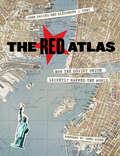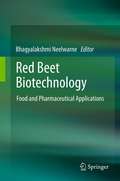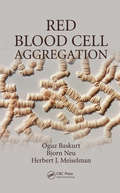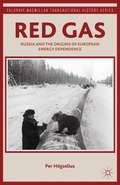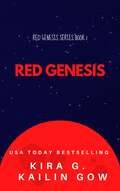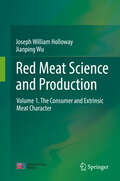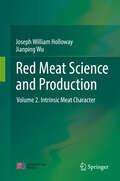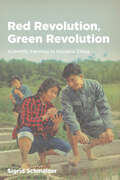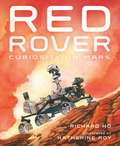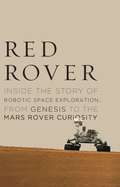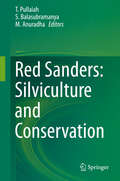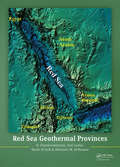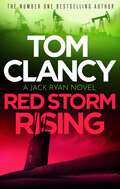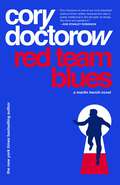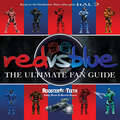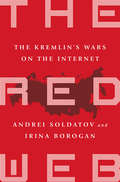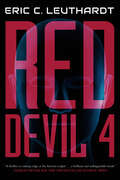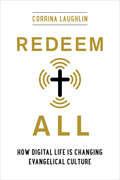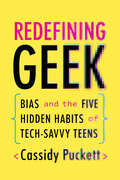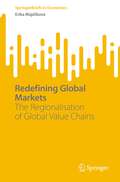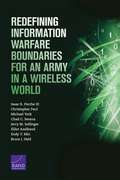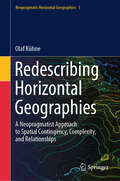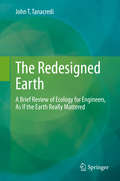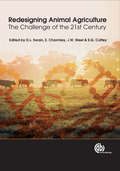- Table View
- List View
The Red Atlas: How the Soviet Union Secretly Mapped the World
by James Risen John Davies Alexander J. KentNearly thirty years after the end of the Cold War, its legacy and the accompanying Russian-American tension continues to loom large. Russia’s access to detailed information on the United States and its allies may not seem so shocking in this day of data clouds and leaks, but long before we had satellite imagery of any neighborhood at a finger’s reach, the amount the Soviet government knew about your family’s city, street, and even your home would astonish you. Revealing how this was possible, The Red Atlas is the never-before-told story of the most comprehensive mapping endeavor in history and the surprising maps that resulted. From 1950 to 1990, the Soviet Army conducted a global topographic mapping program, creating large-scale maps for much of the world that included a diversity of detail that would have supported a full range of military planning. For big cities like New York, DC, and London to towns like Pontiac, MI and Galveston, TX, the Soviets gathered enough information to create street-level maps. What they chose to include on these maps can seem obvious like locations of factories and ports, or more surprising, such as building heights, road widths, and bridge capacities. Some of the detail suggests early satellite technology, while other specifics, like detailed depictions of depths and channels around rivers and harbors, could only have been gained by actual Soviet feet on the ground. The Red Atlas includes over 350 extracts from these incredible Cold War maps, exploring their provenance and cartographic techniques as well as what they can tell us about their makers and the Soviet initiatives that were going on all around us. A fantastic historical document of an era that sometimes seems less distant, The Red Atlas offers an uncanny view of the world through the eyes of Soviet strategists and spies.
Red Beet Biotechnology
by Bhagyalakshmi NeelwarneBiotechnology is a rapidly growing research area which is immediately translated into industrial applications. Although over 1000 research papers have emerged on various aspects of red beet and the chemistry of betalaines pigments, surprisingly no comprehensive book is available. The proposed Red Beet book encompasses a scholarly compilation of recent biotechnological research developments made in basic science, biochemistry of the chief components, technological developments in augmenting and recovery of such useful compounds and value-added products with discussions on future perspectives. The book will provide detailed information of the chemistry of the main components of normal and genetically engineered beetroot.
Red Blood Cell Aggregation
by Oguz Baskurt Björn Neu Herbert J. MeiselmanRed blood cells in humans-and most other mammals-have a tendency to form aggregates with a characteristic face-to-face morphology, similar to a stack of coins. Known as rouleaux, these aggregates are a normally occurring phenomenon and have a major impact on blood rheology. What is the underlying mechanism that produces this pattern? Does this real
Red Gas: Russia and the Origins of European Energy Dependence (Palgrave Macmillan Transnational History Series)
by Per HögseliusThis book applies a systems and risk perspective on international energy relations, author Per Högselius investigates how and why governments, businesses, engineers and other actors sought to promote – and oppose– the establishment of an extensive East-West natural gas regime that seemed to overthrow the fundamental logic of the Cold War.
Red Genesis (Red Genesis #1)
by Kailin Gow Kira G.From USA Today Bestselling and ALA YALSA Award-winning Authors Kailin Gow and Kira G. comes a Science Fiction Post-Apocalypse Thriller. If you liked Bird Box and The Quiet Place, you will enjoy RED GENESIS.Evie was born on a new Earth that had no oxygen. When she was only 13 years old, her mother had to step outside of their underground shelter for an errand. She had been missing ever since. But with her mother's careful instructions and training, Evie has been able to survive for the last 5 years.She knows there are dangerous creatures outside of the underground shelter who travel with the wind and feeds on people's fear. They have killed many humans on the surface when they first appeared. Did her mother meet the same demise? Now at 18 years old with the shelter deteriorating and in need of fresh supplies, Evie is about to embark on the same errand and face the deadly creatures above. What will she find and can she survive? This is a STEM/ELA Literary Book for Age 14 and Up and includes STEM and ELA Literary Discussion Questions.
Red Meat Science and Production: Volume 1. The Consumer and Extrinsic Meat Character
by Joseph William Holloway Jianping WuThis book comprehensively describes the biological underpinnings of red meat production, discussing the current state of the science in the context of the provision of red meat products perceived by consumers to offer a quality eating experience. Covering advances in the science of red meat production, it focuses on production system elements that affect product quality. The chapters explore the latest developments in the determination of consumer preferences, and interpret of these preferences in terms of quality characteristics of red meat, investigating the science-based orchestration of red meat production to achieve product consistency. The book highlights topics such as consumer preferences, the biological and production system elements affecting red meat safety, and the intrinsic (appearance, aroma, and sensory quality) and extrinsic (humane animal and environmentally friendly production) characteristics of red meat. For each characteristic, it discusses the underlying biological and biochemical processes and examines means of altering production systems to impact consumer eating experiences. The book also features a perspective on creating holistic integrated systems for producing red meats to meet consumers’ expectations around the globe. Written by leading authorities in the area of global red meat production systems, it is a comprehensive resource for consumer-oriented red meat producers.
Red Meat Science and Production: Volume 2. Intrinsic Meat Character
by Joseph William Holloway Jianping WuThis book comprehensively describes the biological underpinnings of red meat production, discussing the current state of the science in the context of the provision of red meat products perceived by consumers to offer a quality eating experience. Covering advances in the science of red meat production, it focuses on production system elements that affect product quality. The chapters explore the latest developments in the determination of consumer preferences, and interpret of these preferences in terms of quality characteristics of red meat, investigating the science-based orchestration of red meat production to achieve product consistency. The book highlights topics such as consumer preferences, the biological and production system elements affecting red meat safety, and the intrinsic (appearance, aroma, and sensory quality) and extrinsic (humane animal and environmentally friendly production) characteristics of red meat. For each characteristic, it discusses the underlying biological and biochemical processes and examines means of altering production systems to impact consumer eating experiences. The book also features a perspective on creating holistic integrated systems for producing red meats to meet consumers’ expectations around the globe. Written by leading authorities in the area of global red meat production systems, it is a comprehensive resource for consumer-oriented red meat producers.
Red Revolution, Green Revolution: Scientific Farming in Socialist China
by Sigrid SchmalzerIn 1968, the director of USAID coined the term "green revolution" to celebrate the new technological solutions that promised to ease hunger around the world--and forestall the spread of more "red," or socialist, revolutions. Yet in China, where modernization and scientific progress could not be divorced from politics, green and red revolutions proceeded side by side. In Red Revolution, Green Revolution, Sigrid Schmalzer explores the intersection of politics and agriculture in socialist China through the diverse experiences of scientists, peasants, state agents, and "educated youth." The environmental costs of chemical-intensive agriculture and the human costs of emphasizing increasing production over equitable distribution of food and labor have been felt as strongly in China as anywhere--and yet, as Schmalzer shows, Mao-era challenges to technocracy laid important groundwork for today's sustainability and food justice movements. This history of "scientific farming" in China offers us a unique opportunity not only to explore the consequences of modern agricultural technologies but also to engage in a necessary rethinking of fundamental assumptions about science and society.
Red Rover: Curiosity on Mars
by Richard HoRed Rover is a gorgeously illustrated tale that explores the vast, inhospitable landscape of Mars and the adventures of the little rover that calls the planet its home.Mars has a visitor.It likes to roam...observe...measure...and collect.It explores the red landscape—crossing plains, climbing hills, and tracing the bottoms of craters—in search of waterand life.It is not the first to visit Mars.It will not be the last.But it might be...the most curious.Join Curiosity on its journey across the red planet in this innovative and dynamic nonfiction picture book by Richard Ho, illustrated by Sibert Honor winner Katherine Roy.This title has Common Core connections.
Red Rover: Inside the Story of Robotic Space Exploration, from Genesis to the Mars Rover Curiosity
by Roger WiensFor centuries humankind has fantasized about life on Mars, whether it’s intelligent Martian life invading our planet (immortalized in H. G. Wells’s The War of the Worlds) or humanity colonizing Mars (the late Ray Bradbury’s The Martian Chronicles). The Red Planet’s proximity and likeness to Earth make it a magnet for our collective imagination. Yet the question of whether life exists on Mars--or has ever existed there--remains an open one. Science has not caught up to science fiction--at least not yet. This summer we will be one step closer to finding the answer. On August 5th, Curiosity--a one-ton, Mini Cooper-sized nuclear-powered rover--is scheduled to land on Mars, with the primary mission of determining whether the red planet has ever been physically capable of supporting life. In Getting to Mars, Roger Wiens, the principal investigator for the ChemCam instrument on the rover--the main tool for measuring Mars’s past habitability--will tell the unlikely story of the development of this payload and rover now blasting towards a planet 354 million miles from Earth. ChemCam (short for Chemistry and Camera) is an instrument onboard the Curiosity designed to vaporize and measure the chemical makeup of Martian rocks. Different elements give off uniquely colored light when zapped with a laser; the light is then read by the instrument’s spectrometer and identified. The idea is to use ChemCam to detect life-supporting elements such as carbon, nitrogen, and oxygen to evaluate whether conditions on Mars have ever been favorable for microbial life. This is not only an inside story about sending fantastic lasers to Mars, however. It’s the story of a new era in space exploration. Starting with NASA’s introduction of the Discovery Program in 1992, smaller, scrappier, more nimble missions won out as behemoth manned projects went extinct. This strategic shift presented huge opportunities--but also presented huge risks for shutdown and failure. And as Wiens recounts, his project came close to being closed down on numerous occasions. Getting to Mars is the inspiring account of how Wiens and his team overcame incredible challenges--logistical, financial, and political--to successfully launch a rover in an effort to answer the eternal question: is there life on Mars?
Red Sanders: Silviculture and Conservation
by T. Pullaiah S. Balasubramanya M. AnuradhaPterocarpus santalinus L.f., popularly known as Red Sanders, an endemic tree, belonging to the family Fabaceae is confined to the southern parts of Eastern Ghats. IUCN has listed this tree as endangered. The plant has superlative characteristics in its wood and has many medicinal properties. This plant has attracted the attention of both foresters and lay man because of its high valued wood which is being illegally harvested creating law and order problem. This book is a comprehensive monograph on Red Sanders and is divided into 15 chapters. The book provides information on taxonomy, morphology, distribution, wood anatomy, wood properties and uses, dye principle, phytochemistry, pharmacology, Silvicultural aspects, propagation, cultivation practices, reproductive biology, pests and diseases, biotechnology, molecular studies, conservation, trade, commerce, socioeconomic aspects of Red Sanders, and grey areas of research. The book is profusely illustrated with colour photographs and line drawings. Relevant references have been provided under each chapter. This monograph on Red Sanders with systematic representation of information and illustrations will be a desk reference and field guide to foresters, botanists, researchers, farmers, traders and environmentalists.
Red Sea Geothermal Provinces
by D. Chandrasekharam Aref Lashin Nassir Al Arifi Abdulaziz M Al-Bassam“Today, over two billion people in developing countries live without any electricity. They lead lives of misery, walking miles every day for water and firewood, just to survive. What if there was an existing, viable technology, that when developed to its highest potential could increase everyone’s standard of living, cut fossil fuel demand and the resultant pollution” said Peter Meisen, President, Global Energy Network Institute in 1997. Even though energy is available, technology was not matured enough to tap this energy in the nineties. Now, with the advancement of drilling technology, extracting heat from hot rocks has become a reality. Very soon when CO2 replaces the circulation fluid to extract heat from granites then both fossil fuel based and renewable energy sources will coexists balancing the CO2 emissions and providing energy, food and water security to the rich and the poor countries. Red Sea rift represents the youngest spreading ridges in the world with a vast amount of heat energy stored on either side. The Red Sea is surrounded by countries with a weak economy. Developing a geothermal energy based economy in countries like Eritrea, Djibouti and Ethiopia will provide food and water security to these countries while for other countries, geothermal energy will help in mitigating greenhouse gas emissions. Although geothermal energy sources are available in all the countries since the opening of the Red Sea, millions of years ago, this was not brought to the light. Oil importing countries became highly dependent on the oil rich countries to sustain their economy and growth and thus remained poor. This book unfolds the huge energy source, hydrothermal and EGS, for the benefit of the poor countries to reduce poverty and lift the socio economic status of these countries. The book deals with i) future energy demand, ii) CO2 emissions associated with fossil fuel based power plants, iii) black carbon emissions associated biomass energy source and iv) strategies to reduce CO2 emissions by using geothermal energy as energy source mix in all the countries—oil exporting and oil importing countries— around the Red Sea. The amount of energy available from hot granites in all the countries is well documented. EGS being the future energy source for mankind, this book will form the basis for future research by young scientists and academicians. Availability of fresh water is a matter of concern for all countries. The only way to satisfy the thirst of a growing population, to meet drinking water demand and food security, is to depend on seawater. A large volume of CO2 is being emitted from desalination plants supported by fossil fuel based energy sources. This book describes the advantages of using geothermal energy sources for the desalination process to meet the growing water and food demand of the countries around the Red Sea. Oil rich countries, using its geothermal resources, can now reduce food imports and become self sufficient in food production. This book gives hope for millions of children living in the underdeveloped countries around the Red Sea to satisfy their hunger and live a decent life with a continuous source of electricity, water and food available. This book ends with a note on the economic benefits of geothermal energy vs other renewables. With the signing of the GGA (Global Geothermal Alliance) by several countries during the December 2015 CoP 21 summit in Paris, policy makers and administrators will work together in implementing the necessary infrastructure and support to develop this clean energy source.
Red Storm Rising: An explosive standalone thriller from the international bestseller Tom Clancy
by Tom Clancy'Packed with more nerve-shattering tension than anything in print today . . . Gripping, audacious, brilliant storytelling at its very best' Washington TimesWhen three terrorists destroy the Soviet Union's largest petrochemical plant they think it is a striking blow for freedom. But, unknowingly, they have fired the first shots in World War III.Desperately short of oil, the Kremlin hawks see only one way of solving their problem: seize supplies in the Persian Gulf. To do that, they must first neutralise NATO's forces and eliminate their response - and so they develop Red Storm, a dazzling master plan of diplomatic subterfuge and intense rearmament. The battle lines are drawn and Armageddon beckons . . .
Red Team Blues: A Martin Hench Novel (The Martin Hench Novels)
by Cory DoctorowNew York Times bestseller Cory Doctorow's Red Team Blues is a grabby next-Tuesday thriller about cryptocurrency shenanigans that will awaken you to how the world really works.Martin Hench is 67 years old, single, and successful in a career stretching back to the beginnings of Silicon Valley. He lives and roams California in a very comfortable fully-furnished touring bus, The Unsalted Hash, that he bought years ago from a fading rock star. He knows his way around good food and fine drink. He likes intelligent women, and they like him back often enough.Martin is a—contain your excitement—self-employed forensic accountant, a veteran of the long guerilla war between people who want to hide money, and people who want to find it. He knows computer hardware and software alike, including the ins and outs of high-end databases and the kinds of spreadsheets that are designed to conceal rather than reveal. He’s as comfortable with social media as people a quarter his age, and he’s a world-level expert on the kind of international money-laundering and shell-company chicanery used by Fortune 500 companies, mid-divorce billionaires, and international drug gangs alike. He also knows the Valley like the back of his hand, all the secret histories of charismatic company founders and Sand Hill Road VCs. Because he was there at all the beginnings. He’s not famous, except to the people who matter. He’s made some pretty powerful people happy in his time, and he’s been paid pretty well. It’s been a good life.Now he’s been roped into a job that’s more dangerous than anything he’s ever agreed to before—and it will take every ounce of his skill to get out alive.At the Publisher's request, this title is being sold without Digital Rights Management Software (DRM) applied.
Red vs. Blue Apple FF: The Ultimate Fan Guide
by Rooster Teeth Eddy Rivas Burnie BurnsIn Red vs. Blue, its creators at Rooster Teeth brings together more than a decades' worth of ephemera and behind-the-scenes information from the popular comedic web series, including:Character dossiers and fact sheetsCharacter-driven lists, including "The Wisdom of Caboose"Charts and statistics mapping out character, world, and episode triviaBest Red vs. Blue quotes. Of all timeAlternate stories and character arcs that were abandonedSpotlights on the cast and crew of Red vs. Blue, filled with unique anecdotes, behind-the-scenes stories, and insights into the series and their roleNew, never-before-seen content: Includes annotated scripts of some of the most-watching episodes, side-stores, expanded universe material, alternate endings, deleted scenes and triviaOriginal sketches and drawings
The Red Web: The Struggle Between Russia's Digital Dictators and the New Online Revolutionaries
by Andrei Soldatov Irina BoroganHalf of Russia’s email traffic passes through an ordinary-looking building in an otherwise residential district of South West Moscow. On the eighth floor, in here a room occupied by the FSB, the successor organization to the KGB, is a box the size of a VHS player, marked SORM. SORM once intercepted just phone calls. Now it monitors emails, internet usage, Skype, and all social networks. It is the world’s most intrusive listening device, and it is the Russian Government’s front line for the battle of the future of the internet. Drawn from scores of interviews personally conducted with numerous prominent officials in in the ministry of communications and web-savvy activists challenging the state, Andrei Soldatov and Irina Borogan’s fearless investigative reporting in The Red Web is both harrowing and alarming. They explain the long and storied history of Russian advanced surveillance systems, from research laboratories in Soviet era labor camps to the legalization of government monitoring of all telephone and internet communications in 1995. But for every hacker subcontracted by the FSB to interfere with Russia’s antagonists abroad—such as those who in a massive Denial of Service attack overwhelmed the entire internet in neighboring Estonia—there is a radical or an opportunist who is using the web to chip away at the power of the state at home. Empowered by communication enabled by social media, a community of activists, editors, programmers and others are finding ways to challenge abusive state powers online. Alexei Navalny used his LiveJournal to expose political corruption in Russian, and gained a viral following after attacking Putin’s “party of crooks and thieves. ” Grigory Melkonyants, deputy director of the nation’s only independent election watchdog organization, developed a visual that tracked and mapped voter fraud across the country. And on December 10th, 2011 50,000 people crowded Bolotnaya Square to protest United Russia and its lawless practices. Twenty-four-year-old Ilya Klishin had used Facebook to spark the largest organized demonstration in Moscow since the dying days of the Soviet Union. The internet in Russia is either the most efficient totalitarian tool or the very device by which totalitarianism will be overthrown. Perhaps both. The Red Web exposes how easily a free global exchange can be splintered coerced into becoming a tool of geopolitical warfare. Without much-needed activism or regulation, the Internet will no longer be a safe and egalitarian public forum—but instead a site Balkanized and policed to suit the interests and agendas of the world’s most hostile governments.
Redbird Reef (Fountas & Pinnell Classroom, Guided Reading)
by Kate DopirakNIMAC-sourced textbook. End of the Line? Redbird subway cars sped under the streets, taking people where they needed to go. But after a little more than forty years, the subway cars were old and worn out. Was it really the end of the line for the Redbirds? Or could the subway cars still be useful?
RedDevil 4: A Novel
by Eric C. LeuthardtRedDevil 4 is spine-tingling techno-thriller based on cutting edge research from surgeon and inventor Eric C. Leuthardt.Renowned neurosurgeon Dr. Hagan Maerici is on the verge of a breakthrough in artificial intelligence that could change the way we think about human consciousness. Obsessed with his job and struggling to save his marriage, Dr. Maerici is forced to put his life's work on the line when a rash of brutal murders strikes St. Louis.Edwin Krantz, an aging, technophobic detective, and his partner, Tara Dezner, are tasked with investigating the horrifying killings. Shockingly, the murders have all been committed by prominent citizens who have no obvious motives or history of violence. Seeking an explanation for the suspects' strange behavior, Krantz and Denzer turn to Dr. Maerici, who believes that the answer lies within the killers' brains themselves. Someone is introducing a glitch into the in-brain computer systems of the suspects—a virus that turns ordinary citizens into murderers. With time running out, this trio of unlikely allies must face a gauntlet of obstacles, both human and A.I., as they attempt to avert disaster.At the Publisher's request, this title is being sold without Digital Rights Management Software (DRM) applied.
Redeem All: How Digital Life Is Changing Evangelical Culture
by Corrina LaughlinRedeem All examines the surprising intersection of American evangelicalism and tech innovation. Corrina Laughlin looks at the evangelical Christians who are invested in imagining, using, hacking, adapting, and creating new media technologies for religious purposes. She finds that entrepreneurs, pastors, missionaries, and social media celebrities interpret the promises born in Silicon Valley through the framework of evangelical culture and believe that digital media can help them (to paraphrase Steve Jobs) put their own dent in the universe. Laughlin introduces readers to "startup churches" hoping to reach a global population, entrepreneurs coding for a deeper purpose, digital missionaries networking with mobile phones, and Christian influencers and podcasters seeking new forms of community engagement. Redeem All reveals how evangelicalism has changed as it eagerly adopts the norms of the digital age.
Redefining Geek: Bias and the Five Hidden Habits of Tech-Savvy Teens
by Cassidy PuckettA surprising and deeply researched look at how everyone can develop tech fluency by focusing on five easily developed learning habits.Picture a typical computer geek. Likely white, male, and someone you’d say has a “natural instinct” for technology. Yet, after six years teaching technology classes to first-generation, low-income middle school students in Oakland, California, Cassidy Puckett has seen firsthand that being good with technology is not something people are born with—it’s something they learn. In Redefining Geek, she overturns the stereotypes around the digitally savvy and identifies the habits that can help everyone cultivate their inner geek.Drawing on observations and interviews with a diverse group of students around the country, Puckett zeroes in on five technology learning habits that enable tech-savvy teens to learn new technologies: a willingness to try and fail, management of frustration and boredom, use of models, and the abilities to use design logic and identify efficiencies. In Redefining Geek, she shows how to measure and build these habits, and she demonstrates how many teens historically marginalized in STEM are already using these habits and would benefit from recognition for their talent, access to further learning opportunities, and support in career pathways. She argues that if we can develop, recognize, and reward these technological learning habits in all kids—especially girls and historically marginalized racial and ethnic groups—we can address many educational inequities and disparities in STEM.Revealing how being good with technology is not about natural ability but habit and persistence, Redefining Geek speaks to the ongoing conversation on equity in technology education and argues for a more inclusive technology learning experience for all students.
Redefining Global Markets: The Regionalisation of Global Value Chains (SpringerBriefs in Economics)
by Erika MajzlíkováThis book analyses the possible regionalization of global value chains, particularly in manufacturing. Amidst calls for an industrial renaissance in Europe and a resurgence of manufacturing jobs in the United States, the dynamics of global value chains have been reshaped by global pandemics, geopolitical tensions, and increased automation. Employing a multi-regional input–output model, the book scrutinizes the decline in offshoring afer the mid-2010s. It sheds light on regionalization as a pivotal force redefining global markets, and focuses on Europe and North America, revealing the strengthening of regional ties. Discussing future challenges, the book will appeal to scholars, students, and researchers, as well as practitioners and policy-makers interested in a better understanding of (de)globalization nuances connected to the evolving role of manufacturing in global value chains.
Redefining Information Warfare Boundaries For An Army In A Wireless World
by Isaac R. Porche III Christopher Paul Michael York Chad C. Serena Jerry M. Sollinger Elliot Axelband Endy Y. Min Bruce J. HeldThe U. S. Army is studying ways to apply its cyber power and is reconsidering doctrinally defined areas that are integral to cyberspace operations. An examination of network operations, information operations, and several other, more focused areas across the U. S. military found significant overlap and potential boundary progression that could inform the development of future Army doctrine.
Redescribing Horizontal Geographies: A Neopragmatist Approach to Spatial Contingency, Complexity, and Relationships (Neopragmatic Horizontal Geographies #1)
by Olaf KühneThe first book in the series provides the concept of a theoretical redefinition of 'horizontal geographies'. These denote the spatial syntheses as undertaken in various disciplines, whether as regional studies, area studies, new regional geography, and many more. The basis of the redescription is philosophical neopragmatism, which has occasionally been taken up in the spatial sciences, but has never been differentiated into a theory-driven empirical research program. This development of the research program guides the present book. Philosophical neopragmatism, especially as conceptualized by Richard Rorty, focuses in particular on contingency of society, self, and language, which also allows spatial syntheses to be understood not as 'images of reality' but as contingent proposals for redescribing spaces. As a result of the complexity of spatial processes, their horizontal geographic study requires a triangulation of theories, methods, researcher perspectives, data, and the involvement of people without expert special knowledge. To highlight the contingency of the spatial syntheses, the presentation of the results - —here especially graphic and cartographic - —resorts to the attitude of irony. Regarding the six levels of trigangulation, neopragmatism acts as a meta-theoretical orientation framework. Against the background of the complexity of spatial developments on the one hand and to operationalize Rorty's principle of private self-creation and public solidarity on the other hand, Ralf Dahrendorf's concept of life chances is drawn upon. Especially in the differentiation of this concept made in this book, it serves on the one hand for an understanding access of the (also spatial) expression of options and ligatures,, and on the other hand it offers a normative framework for the evaluation of socio-spatial developments. The reference to neopragmatic studies on spatial syntheses conducted to date and evaluated in this book shows the potential of the approach elaborated here in conceptual detail for the first time.
The Redesigned Earth: A Brief Review of Ecology for Engineers, As If the Earth Really Mattered
by John T. TanacrediThis book provides insight into the basic aspects of ecology that impact or are affected by engineering practices. Ecological principals are described and discussed through the lens of the influences that built structures have on the Earth’s biological, geological, and chemical systems. The text goes on to elucidate the engineering influences that have or will influence the face of the Earth. These influences redesign the Earth, either by destroying natural systems and replacing them with highly subsidized systems or by attempting to restore highly disturbed or contaminated systems with the basic natural systems that were originally present.
Redesigning Animal Agriculture: The Challenge of the 21st Century
by David L. Swain Ed Charmley John Steel Shaun CoffeyFocusing on livestock production systems, this comprehensive text addresses how the growing diversity of global food demands will be met in the future, providing insights into new and emerging scientific areas and the implications for addressing global drivers for change.
